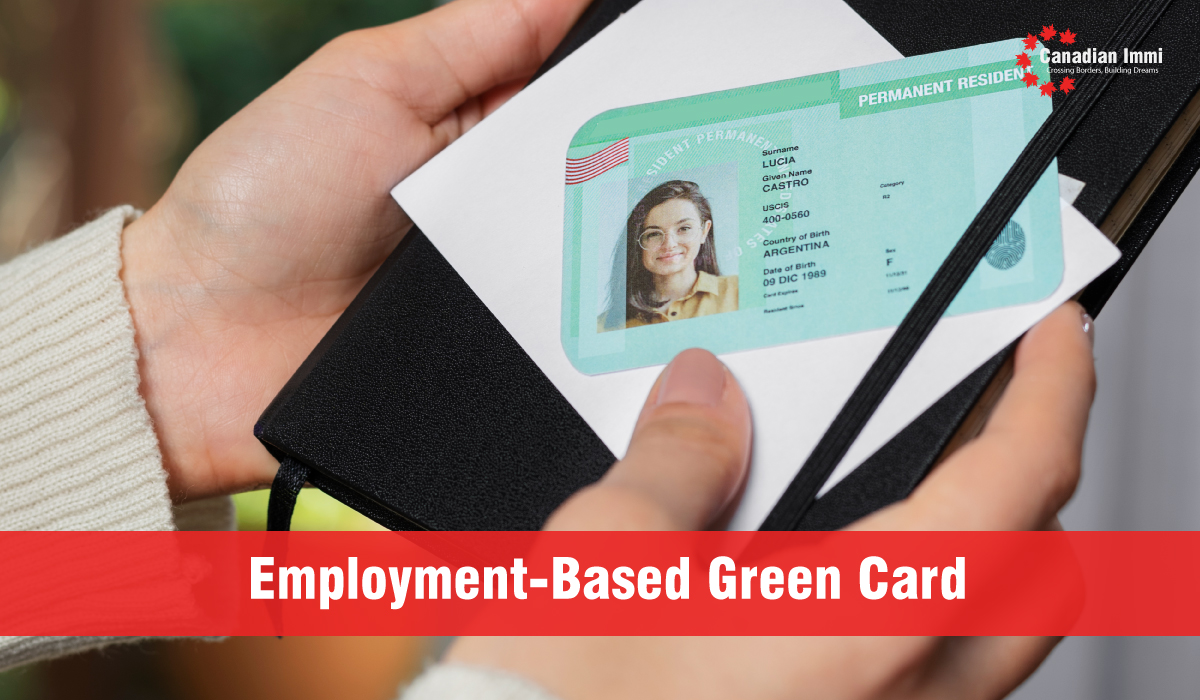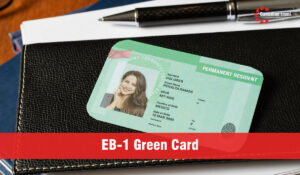Many international students want to stay in the United States beyond their studies. Luckily, there are several ways to transition from F1 to green card.
Students can get a green card through employment, family, special skills, marriage or the diversity lottery programme (though Indians are not eligible for the latter in 2024). This article will discuss the different paths to green card conversion for F1 visa holders.
Employment-Based Green Card
The employment-based path offers a structured pathway for high-caliber professionals to achieve permanent residency in the United States. These green cards are segmented into various categories like EB-1, EB-2, and EB-3 with each caters to specific types of professionals distinguished by their specialized skills, advanced educational qualifications, or recognized achievements. The EB-1 category is reserved for individuals with extraordinary ability in their field and includes categories such as outstanding professors or researchers and multinational executives and managers. The EB-2 visa caters to professionals with advanced degrees and exceptional abilities, and includes a National Interest Waiver category for those whose work is in the “immediate and national interest” of the United States.
Many international students are on a path toward obtaining their green card through OPT or STEM OPT (Optional Practical Training). The ultimate goal of these visas is to allow the students to apply the theoretical knowledge they acquired through their academic programs in real-world workplace settings and gain valuable professional experience in the United States. If the student wishes to continue working in the United States after their OPT or STEM OPT expires, then a green card must be pursued.
The process is complex, and it’s important to consult with an experienced attorney who can guide the way through the immigration process. This is especially true for family members who are applying with the main applicant—it’s vital that each member of the family meets all the requirements for the employment-based green card process to ensure a smooth and successful outcome.
A number of green cards are available to spouses and children of U.S. citizens, including those who have been admitted to the country through the diversity lottery. These family-based green cards have a much shorter processing time than employment-based green cards.
There are a variety of ways to transition from F1 to green card, including through employment, marriage, family, and diversity. Consult with Agarwal Law Group for more information on the process and how it applies to you. Our team is here to help you navigate this often-challenging, nuanced path toward a lifetime of legal residency in the United States.

Family-Based Green Card
There are many ways to obtain a green card, but the most popular way is through family sponsorship. This allows US citizens or permanent residents to sponsor their immediate family members for green cards, including spouses, children, and parents. While some people have concerns about “chain migration,” which is when family members sponsor their other family members, this method of immigration helps to reunite families and promotes economic growth in the United States.
If an F-1 student is in the process of converting to a green card through marriage, it is crucial that they do not apply for a different visa type while their application is pending. This will cause a delay in their processing time and could even lead to a denial of their application due to preconceived intent.
Getting a green card through family is often more efficient than getting one through employment. This is because family-based green cards are not subject to annual visa limits like those associated with most employment-based categories. However, these processes are not without their challenges, such as visa retrogression or backlogs.
To avoid these issues, it is important to work with an experienced immigration lawyer during this process. They can help ensure that all the necessary documents are submitted properly and on time, as well as provide guidance throughout the process. In addition, an attorney can assist with the preparation of supplemental documentation that may be needed to support your case.
If you are currently on an F-1 visa and would like to begin the process of obtaining your green card, contact Bailey Immigration. We can explain the different paths to a green card and work with you to determine which is best for your situation.
Our firm is dedicated to helping families reunify and live together in the United States. We can also guide you through the complex process of applying for a family-based green card, whether through adjustment of status or consular processing. To learn more about how we can help you, call our office today. We look forward to hearing from you!
Refugee/Asylee Green Card
F-1 visa holders who plan to stay in the United States for a long period of time may wish to obtain a Green Card. This is a process that is possible but will take a great deal of time and patience. There are several paths to obtaining a green card that can be used by F-1 visa holders, such as employment, family, and refugee/asylee status. The process will be a lengthy and nuanced one, so it is best to consult all of the available options and find out which route suits you the most.
One of the quickest ways to go from F-1 to Green Card is through marriage. This is a possibility for many international students, but the timing of the process is very important. The US immigration laws require that you must have been in the country for at least 90 days before applying to become a permanent resident through marriage. If you don’t meet this requirement, your application will be denied on the presumption that you did so with the intention of obtaining a Green Card.
Another option to get a Green Card is to apply through the Persons with Extraordinary Abilities category (EB-1 visa). This visa is reserved for people who have extraordinary skills that are considered essential for the United States’ economy, such as scientific research, business, arts, and other fields. If you have an EB-1 visa, you can work in your field of expertise permanently in the United States.
Asylum-seekers who obtained a grant of asylum are permitted to transition from refugee to green card status in just one year. This can only be done if they haven’t traveled back to the country they fled from or engaged in any activity that could jeopardize their status. Asylum-seekers who receive a green card are eligible to work and live in the United States, as well as obtain federal student financial aid, join certain branches of the military, and return from international travel without needing a visa. They are also eligible to apply for U.S. citizenship after five years of lawful permanent residency.
EB-1 Green Card
As the first preference category for employment-based green cards, the EB-1 has historically had the shortest wait times. It is intended for people of extraordinary ability in the sciences, arts, education, business, or athletics. Unlike the EB-2 and EB-3 categories, which have quota backlogs, the EB-1 category is self-petitionable and does not require sponsorship or labor certification. This makes the EB-1 visa especially attractive for entrepreneurs who can qualify under this category.
To meet the EB-1A category requirements, one must be able to demonstrate that they have “sustained national or international acclaim in their claimed field of expertise.” This can be proven through the receipt of a major, internationally recognized award such as a Nobel Prize or through evidence such as comprehensive Google Scholar profiles that showcase authored scholarly articles. A well-executed strategy involves strategically leveraging documentation to satisfy multiple EB-1A criteria. For example, a letter of endorsement from a former supervisor or colleague can be leveraged to satisfy the requirement for a history of significant research contributions and also to reinforce that the individual’s compensation is superior to that of other researchers in the same discipline.
A foreign person can also obtain an EB-1 green card by being transferred to a company in the United States in a managerial or executive position. This category is more common with entrepreneur visa holders who have already established their brand in the market and can prove that they can fill a critical role within the company. Like the EB-1A category, it does not require sponsorship or labor certification and can be expedited through premium processing.
While the EB-1 category offers an easy path to a green card, it is not without its challenges. Immigration officers can be skeptical of claims of extraordinary ability. To help mitigate this, it is important to build a solid brand and establish a clear niche within the industry. This can be done through social media activity, conference speaking engagements, and publications. It is also helpful to have a mentor or peer in the field who can provide an objective opinion.


